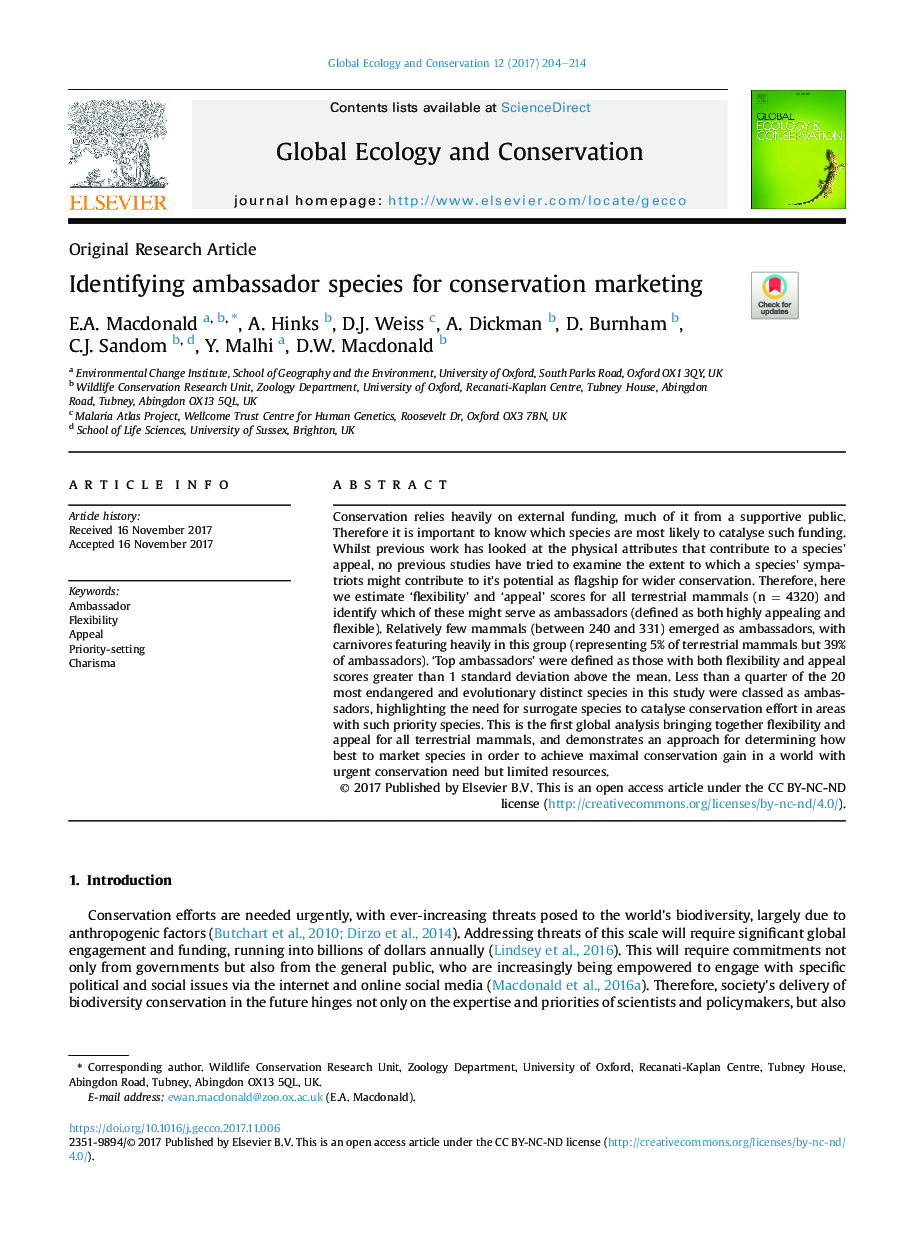| Article ID | Journal | Published Year | Pages | File Type |
|---|---|---|---|---|
| 8846260 | Global Ecology and Conservation | 2017 | 11 Pages |
Abstract
Conservation relies heavily on external funding, much of it from a supportive public. Therefore it is important to know which species are most likely to catalyse such funding. Whilst previous work has looked at the physical attributes that contribute to a species' appeal, no previous studies have tried to examine the extent to which a species' sympatriots might contribute to it's potential as flagship for wider conservation. Therefore, here we estimate 'flexibility' and 'appeal' scores for all terrestrial mammals (n = 4320) and identify which of these might serve as ambassadors (defined as both highly appealing and flexible). Relatively few mammals (between 240 and 331) emerged as ambassadors, with carnivores featuring heavily in this group (representing 5% of terrestrial mammals but 39% of ambassadors). 'Top ambassadors' were defined as those with both flexibility and appeal scores greater than 1 standard deviation above the mean. Less than a quarter of the 20 most endangered and evolutionary distinct species in this study were classed as ambassadors, highlighting the need for surrogate species to catalyse conservation effort in areas with such priority species. This is the first global analysis bringing together flexibility and appeal for all terrestrial mammals, and demonstrates an approach for determining how best to market species in order to achieve maximal conservation gain in a world with urgent conservation need but limited resources.
Related Topics
Life Sciences
Agricultural and Biological Sciences
Ecology, Evolution, Behavior and Systematics
Authors
E.A. Macdonald, A. Hinks, D.J. Weiss, A. Dickman, D. Burnham, C.J. Sandom, Y. Malhi, D.W. Macdonald,
